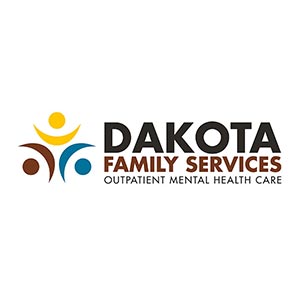Though commonly associated with military veterans, anyone can be affected by Post-Traumatic Stress Disorder, or PTSD. PTSD can be frightening to experience, but the first step to recovery is understanding where it comes from and how it can be fixed.
What is Trauma?

Trauma is an intense emotional response caused by a terrible event, such as a car crash, workplace violence, domestic abuse, bullying, or even growing up in an invalidating environment. Trauma is very personal and affects everybody differently. One person may have severe trauma symptoms from a certain event, whereas another person who experienced the same event may have little to no trauma symptoms at all.
What Are the Symptoms of PTSD?
Immediately following a traumatic event, almost everyone will experience some symptoms of PTSD. These include intrusive symptoms, avoidant symptoms, alterations in mood and thinking, reactive symptoms, and in some cases dissociative symptoms.
- Intrusive symptoms include flashbacks and nightmares of a traumatic event. When this occurs, your brain becomes convinced that the event is taking place again, which can cause a racing heartbeat, sudden fear, or anger.
- Avoidant symptoms refer to actions you take to avoid situations similar to the traumatic experience. For example, if you were involved in a car accident, you might refuse to drive again or avoid cars altogether. While avoiding trauma triggers can decrease intrusive symptoms, it can also create many obstacles in recovery and daily life.
- Negative alterations in mood and thinking may include trouble remembering parts of a traumatic event, where some details are clear, and others are hazy or missing. If you are experiencing negative alterations in thinking, you may also develop exaggerated beliefs about yourself or the world, such as that others can’t be trusted, or that your environment is more dangerous than it truly is. You may also struggle with feelings of guilt or shame, and it may be difficult to feel happy or interested in previously enjoyable activities.
- Reactive symptoms of PTSD can cause you to become angry or irritable when talking or thinking about your trauma. Like avoidant symptoms, these reactions protect you from your experience. You may also engage in risky behavior and self-harm or become hypervigilant of your surroundings.
- Though less common, you may also have dissociative symptoms. These include feeling foggy or detached, but can also include blackouts that occur when you are in an intense state of anger or fear.
When Should I Seek Treatment?
For most people who experience a traumatic event, symptoms will go away within 2-3 months. However, some individuals continue to experience symptoms long after this time frame. If you’re still experiencing symptoms of trauma after three months, it may be time to seek treatment for PTSD.
How is PTSD Treated?
Many people avoid treatment for PTSD because it is very difficult. However, there are some upsides. Not only is PTSD treatment effective and relatively short, there are also multiple treatment options to choose from.
Four different treatment methods have been proven effective for PTSD, including Trauma-Focused Cognitive Behavioral Therapy (TF-CBT), Cognitive Processing Therapy (CPT), Eye Movement Desensitization Reprogramming (EMDR), and Prolonged Exposure Therapy.
- Trauma-Focused Cognitive Behavioral Therapy
TF-CBT is effective for ages 3-19 and includes psychoeducation, skill building, emotion regulation, and creating a trauma narrative. A trauma narrative is essentially a retelling of your traumatic event through a written story, song, painting, puppet show, or any number of formats. This allows you to be creative and find a medium in which you feel comfortable expressing your experience.
- Cognitive Processing Therapy
CPT is effective for ages 13 and up and is largely worksheet-based. In this treatment, you focus more on processing your thoughts and less on re-exposing yourself to the source of your trauma.
- Eye Movement Desensitization Reprogramming
EMDR, effective for all ages, uses bilateral stimulation to help you process your memories. Bilateral stimulation can take the form of guided eye movement, tapping, or holding devices that vibrate back and forth to stimulate both sides of your brain while you think about your traumatic memories.
- Prolonged Exposure
Prolonged Exposure Therapy is heavily reliant on re-exposing you to your traumatic event. In this treatment, you create imaginal exposures, in which you explain your trauma to a therapist and record their explanation. You then listen to these recordings each day for 30-45 minutes.
There is no one right treatment for trauma. Each treatment is effective, but the best treatment plan is the one you are willing to do.
How Long Does Trauma Treatment Take?
PTSD is not a lifelong diagnosis. Typically, it can be treated in 8-12 weeks. However, because we all experience trauma differently, you may need more or less time to treat your symptoms.
If you start trauma treatment, it’s extremely important to finish it. Stopping partway through treatment is like leaving surgery with an open wound. Your symptoms might worsen and be harder to fix when you return to treatment.
It’s not uncommon to feel agitated and tired following sessions. This is a sign that the therapy is working. Remember that while trauma treatment is difficult, you will eventually feel better if you see it through to the end.



